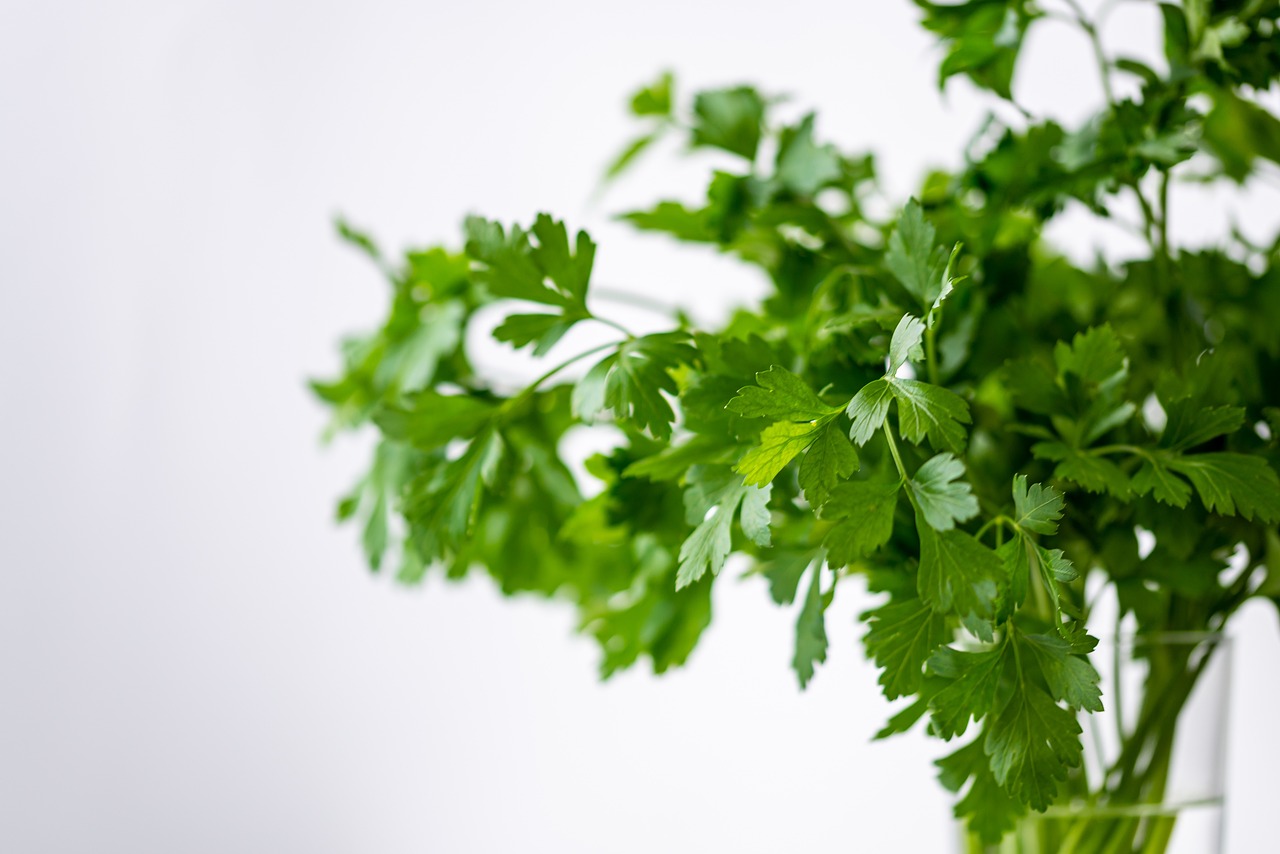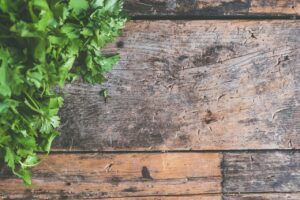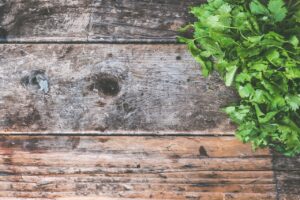Cilantro
Overview
Cilantro, or coriander, is a fragrant annual herb treasured worldwide for its pungent leaves and aromatic seeds. It features a distinctive appearance with feathery leaves atop and broader ones at the base, offering culinary and medicinal delights from its greenery to its seeds. With simple growing conditions favoring cooler climates, this versatile herb adds a fresh zest to dishes and gardens alike.

Characteristics
Known for its variable leaf shapes, ability to thrive in cool weather, and versatile uses as both a fresh herb and a spice.
Region
Cilantro/coriander is commonly grown in temperate regions worldwide.
Natural Habitat
Cilantro/Coriander is typically found in regions across Southern Europe, Northern Africa, and Southwestern Asia.
Cultivation
Prefers full sun, moderate watering, and well-draining soil with a pH of 6.2 to 6.8.
Uses and Benefits
Cilantro, the leafy part of the *Coriandrum sativum* plant, enriches a myriad of dishes with its fresh and piquant flavor2. Savored across various cuisines, it’s a staple in salsas and an irreplaceable garnish in many Asian and Mexican recipes. Beyond its culinary versatility, cilantro contains vitamins and may have antioxidant properties5.
Coriander seeds, on the other hand, possess a warm, earthy essence that’s integral to spice blends and curries2. Not just a flavorful addition, these seeds are believed to support digestion and may even help regulate blood sugar levels5. The plant’s holistic edibility and benefits make it a dual-purpose ally in the kitchen and beyond.

Cultivation Tips
Cilantro flourishes in the cooler embrace of spring and fall, so sow your seeds as a crisp breeze still lingers or as the autumn leaves begin to tumble. Place those tiny promises just a whisper below the soil – about 1/4 to 1/2 inch deep – and cozy them up close, at the same gentle depth apart in rows spread a hand’s width1. No need for elbow room here; cilantro does just fine snuggled with its kin, so you can skip the thinning if you’re after lush leaves to add a spark of flavor to your dishes1.
And when it’s time for the seeds, those little orbs of culinary gold, give them space to breathe – set them 2 to 4 inches apart and dream of the fragrant spice they’ll bring to your table1.
Seasonal Considerations
Cilantro truly comes alive in the cooler embrace of spring and fall. To bask in its lush greenery, sow the seeds directly into the soil as soon as the soil can be worked in early spring. For a continuous harvest, keep in mind to sow every few weeks until late summer1.
If your taste buds are eagerly awaiting the aromatic seeds known as coriander, patience during cultivation is key. Thinning the plants to stand 2-4 inches apart will encourage healthy seed production1. However, whether seeking delicate leaves or robust seeds, keep a watchful eye on the weather – extreme heat can send cilantro bolting, leaving you with fewer leaves and more seeds than you might have planned!

Issues and Troubleshooting
While growing cilantro, gardeners might run into a few common issues worth noting. For one, cilantro can bolt, or flower prematurely, especially when exposed to sudden temperature changes or longer days during the summer months. This change can cause the leaves to become less flavorful, so it’s important to harvest often and consider planting bolt-resistant varieties4.
Another concern is the plant’s susceptibility to pests like aphids and fungal diseases such as powdery mildew, which thrive in overcrowded conditions with poor air circulation3. To combat this, ensure adequate spacing and practice good air circulation strategies around your plants.
Additionally, cilantro may attract beneficial insects, like ladybugs, that prey on pests. Yet, without proper soil moisture — cilantro prefers consistently moist soil — the plant can suffer from stress, leading to leaf wilting or yellowing5. Overwatering can pose a risk too, potentially leading to root rot.
To achieve a bountiful cilantro harvest, it’s vital to monitor and maintain the balance of sun, water, and soil conditions, coupled with the tender care any aromatic herb would love.
History and Folklore
Cilantro, also known as coriander, is steeped in history and shrouded in fascinating folklore. This herb, *Coriandrum sativum*, is believed to have been cultivated by ancient Egyptians and even entombed with pharaohs as a symbol of eternal love1. In medieval times, people would strew coriander seeds to ward off evil spirits during weddings and in homes for protection. Also found in the hanging gardens of Babylon, this plant has been a culinary and medicinal staple for millennia across cultures. Its dual identity—cilantro for the leafy parts and coriander for the seeds—has enriched cuisines and natural remedies around the globe.
The plant’s mentioned significance in various rituals and protections accentuates the potential mystical properties attributed to herbs in folklore.
References
1. Cilantro (Coriander) Growing Information: How to Sow, Grow & Harvest, https://www.johnnyseeds.com/growers-library/herbs/cilantro-coriander/cilantro-coriander-key-growing-information.html
2. How to Grow Cilantro (Coriander) – The Spruce, https://www.thespruce.com/how-to-grow-cilantro-4125820
3. Coriander (Cilantro) | Diseases and Pests, Description, Uses, Propagation, https://plantvillage.psu.edu/topics/coriander-cilantro/infos
4. Learn How to Plant and Grow Cilantro (Coriander) – Gardener’s Path, https://gardenerspath.com/plants/herbs/grow-cilantro/
5. Coriander and Cilantro: Planting, Growing, and Harvesting Coriander and …, https://www.almanac.com/plant/cilantro-coriander
Nicolas Duval
Nicolas is a passionate advocate for nature and the art of wildcrafting. His dedication shines through in Wildcraftia, a website he meticulously crafted to serve as a haven for nature enthusiasts worldwide. Driven by a deep appreciation for nature’s connection to humanity, Nicolas embarked on his journey in 2011 with SmokableHerbs, a platform showcasing his love for nature’s bounty. Building upon this foundation, he established Smokably, a thriving online store offering premium herbs and blends to a global audience.
